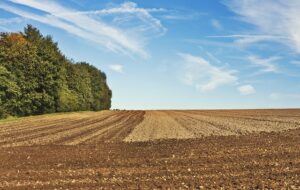
Introduction:
Modern concepts in tillage have evolved significantly in recent years, largely driven by advancements in technology, environmental concerns, and a deeper understanding of soil health. Here are some key modern concepts in tillage:
Conservation Tillage:
Conservation tillage aims to reduce soil erosion, improve soil health, and conserve water by minimizing soil disturbance. This approach includes practices such as no-till, strip-till, and reduced tillage, where only a portion of the field is tilled, leaving the rest covered with crop residue or cover crops.
No-Till Farming:
No-till farming involves planting crops without tilling the soil. This practice helps to preserve soil structure, reduce erosion, and conserve moisture. It also sequesters carbon in the soil, contributing to climate change mitigation.
Strip-Till:
Strip-till involves tilling narrow strips of soil where crops will be planted, leaving the rest of the field untilled. This method combines the benefits of reduced soil disturbance with the advantages of tillage for seedbed preparation and weed control in the planting zone.
Vertical Tillage:
Vertical tillage is a system that uses specialized equipment to lightly cultivate the soil without inverting or mixing soil layers. It helps to manage crop residue, improve seedbed conditions, and promote root development while minimizing soil compaction.
Precision Tillage:
Precision tillage employs advanced technologies such as GPS-guided equipment and variable rate technology to precisely manage tillage operations based on soil variability within a field. This approach optimizes soil health, reduces input costs, and enhances crop yields.
Controlled Traffic Farming (CTF):
CTF involves confining all field operations, including tillage, planting, and harvesting, to permanent traffic lanes within a field. By minimizing soil compaction outside these lanes, CTF preserves soil structure, improves water infiltration, and enhances crop root development.
Reduced Tillage Implements:
Modern tillage implements are designed to minimize soil disturbance while achieving specific tillage objectives. Equipment such as vertical tillage tools, precision tillage implements, and conservation tillage planters allow farmers to tailor tillage practices to their specific soil and cropping systems.
Cover Cropping:
Integrating cover crops into tillage systems can improve soil health, reduce erosion, suppress weeds, and enhance nutrient cycling. Cover crops also provide additional benefits such as nitrogen fixation, pest management, and habitat for beneficial organisms.
Organic No-Till:
Organic no-till systems combine principles of no-till farming with organic management practices, such as cover cropping, crop rotation, and organic soil amendments. These systems aim to minimize soil disturbance while maintaining soil fertility and weed control without synthetic inputs.
Adaptive Management:
Adopting a holistic approach to tillage that considers soil health, environmental sustainability, and economic viability. Farmers are increasingly using data-driven decision-making tools, such as soil tests, yield maps, and remote sensing, to optimize tillage practices and adapt to changing conditions over time.
Conclusion:
These modern concepts in tillage reflect a shift towards more sustainable and environmentally friendly farming practices that prioritize soil health and long-term productivity.
